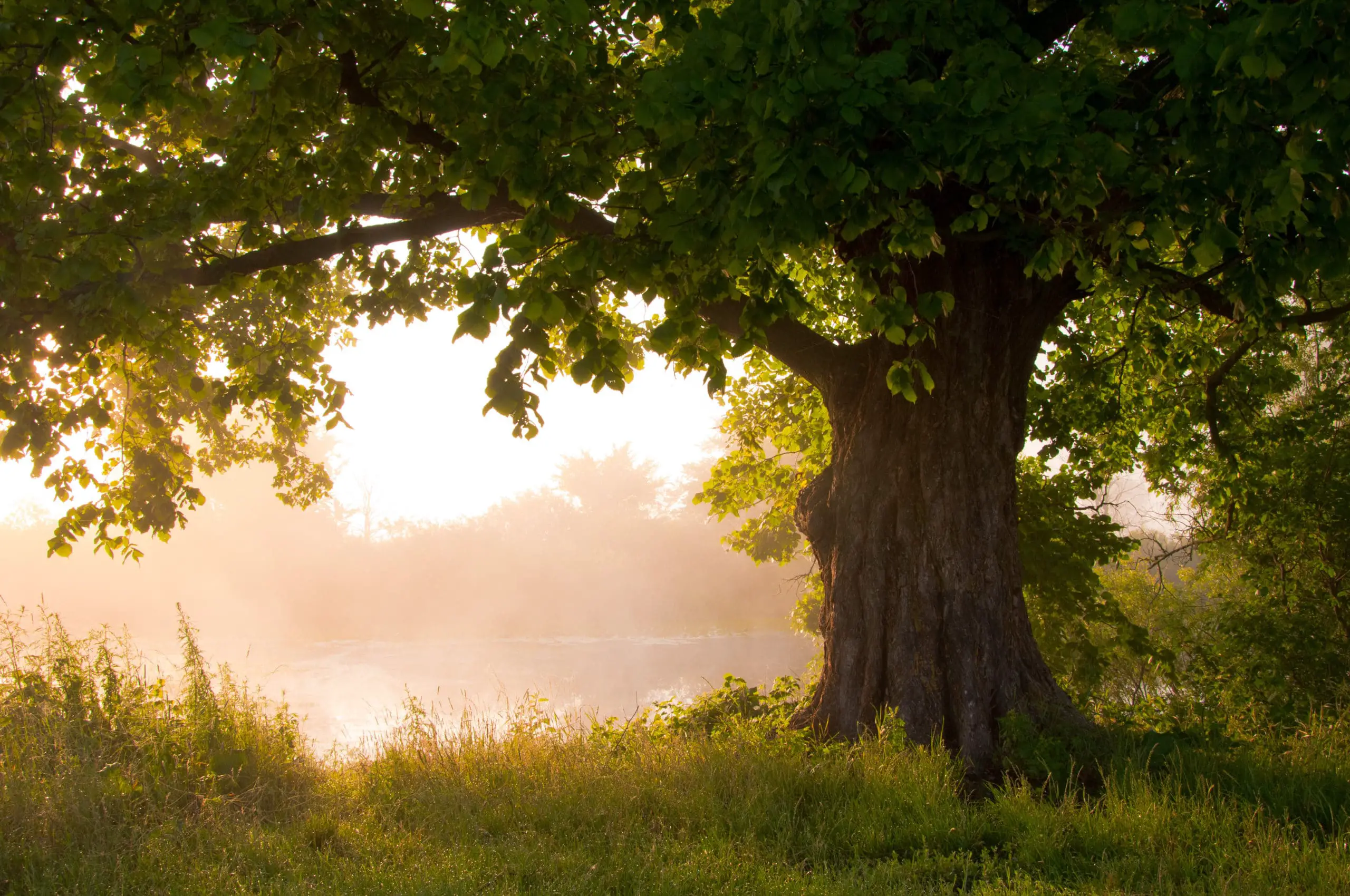There are a great many trees that you plant, and they grow much bigger than you thought they would grow. Then they seem to have gotten much closer to your house than you thought they would.
Trees with huge roots that have enough strength and depth to support the enormous trees with wide spreads. Where taproots are involved, the roots are between 20 – 200 feet in depth.
Then their roots spread much farther than you thought possible. It’s important that you know a lot of facts about a tree before you buy it and before you decide where to plant it.
What Type of Tree Roots Grow Straight Down?
Here’s A List Of Some Trees With The Strongest And Deepest Roots:
- White Oak Tree
- Walnut Tree
- Hickory Tree
- Hornbeam Tree
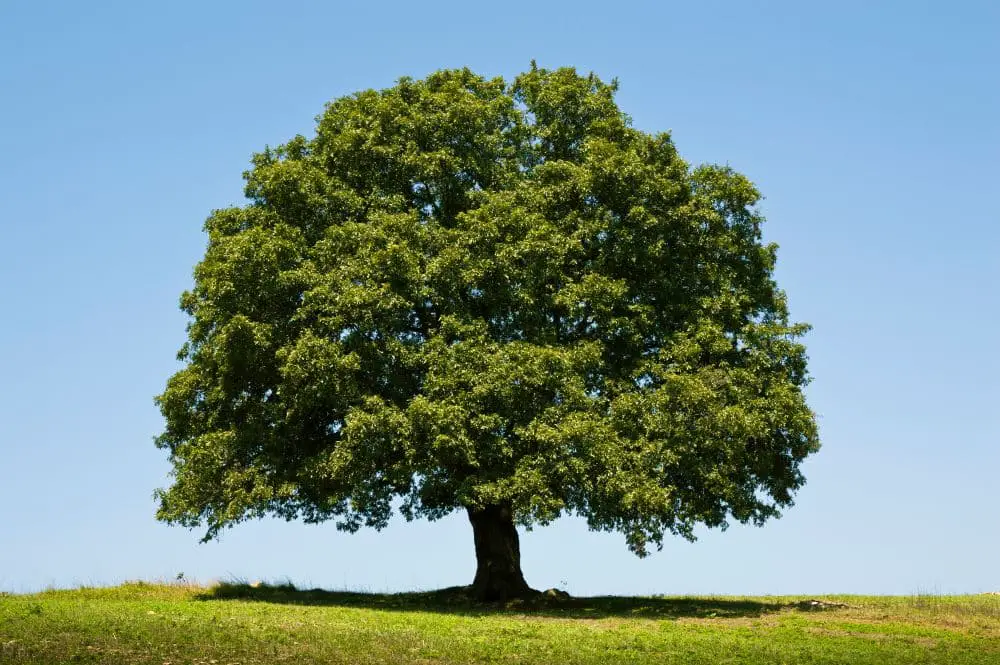
The Rest Are Exceptional Cases For Root Depth:
- The Shepherd’s Tree
- The Wild Fig Tree
- The Sassafras Trees
- Black Gum Trees
- Sweetgum Tree
- Butternut Tree
- Japanese Pagoda Tree
- Pine Tree
- White Oaks Tree
- Hickory Tree
- Walnut Tree
- Hornbeam Tree
Tree Roots
The growth of tree roots is all about the search for nutrients and the support of the tree’s canopy.
I hear stories of trees having to be cut down because their roots damage the foundation of their owner’s house.
Some have wrapped their roots around the sewage pipe for your house and are thus causing havoc in your bathroom.
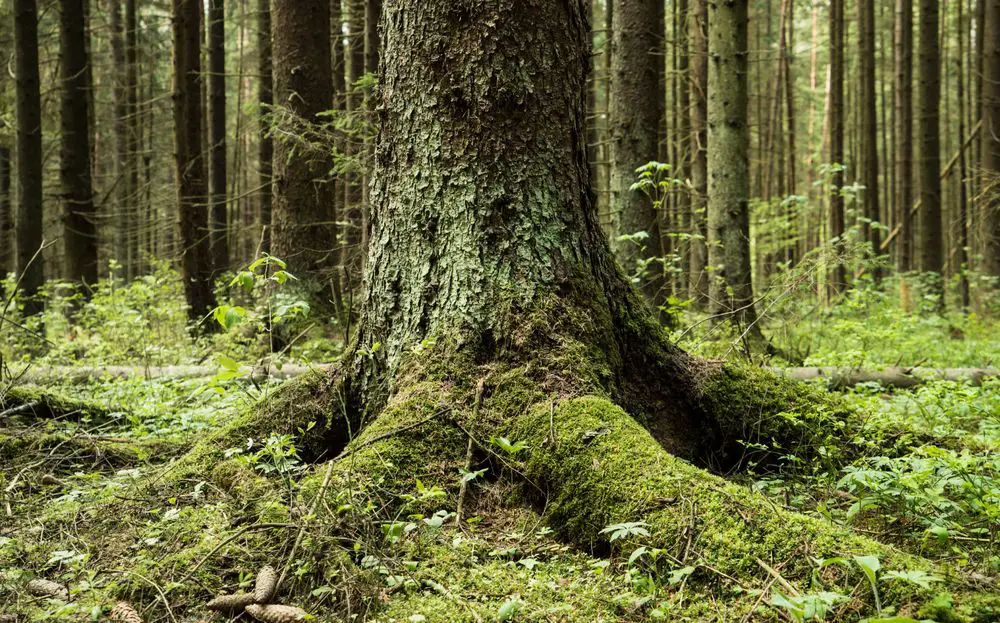
Others have made an appearance above ground at your pathway and are tearing it up and spreading its roots even nearer the house to do damage to your garage or tear up the flooring of an outhouse or cause your pool to leak.
These trees do not have tap roots. Their roots spread far and wide. They can shoot their roots way down into the earth, but they can also show how wide is their reach – and it’s really, surprisingly scary.
If you grow a tree and plant it, not far enough away from the house, and it doesn’t have a taproot, it has roots growing and spreading that will possibly damage your house.
Best you build a huge tree house in its massive branches so that you’ll have somewhere else to live when you have to move out of your house while the repairs are being done.
Of course, you could always chop it down – there’s a challenge! The roots of some of the larger trees have an amazing spread above with its branches and leaves and its root spread is even further and wider.
They also have enormous trunks that seem to be saw resistant.
I’ve known for a long time that their roots go straight through a rock it might find in its way, rather than go round it. Hence, they are persistent and super powerful.
Therefore, Plan Assiduously And Plant Successfully!
Valuable Beauty
No-one wants a tree that will uproot and fall down in really heavy winds. Thus, you’re going to be asking for something with a robust root system.
You probably also want a huge shade provider, so you’re looking for something that’s mighty and has amazing strength, such as:
White Oak Tree
Deep Roots that shoot down into the ground for about 15 feet, the White Walnut Trees don’t have to be concerned about drought.
Walnut Tree
Growing to beyond 11 plus feet, Walnut Trees have very deep roots of 11 feet or more. It protects the tree from adverse weather conditions. Emerging quickly these trees grow fast and spread a wide canopy – the Walnut Tree reaches 30 meters in height
Hickories Tree
Hickory trees come in multiple varieties. It is among those trees with the deepest root systems and thrives in adverse conditions due to the depths reached. However, attaining such depths is only possible when certain conditions are met.
Hornbeam Tree
The Hornbeam tree root systems grow deep into the soil. The roots reach down into the soil for about six feet in ideal soil conditions.
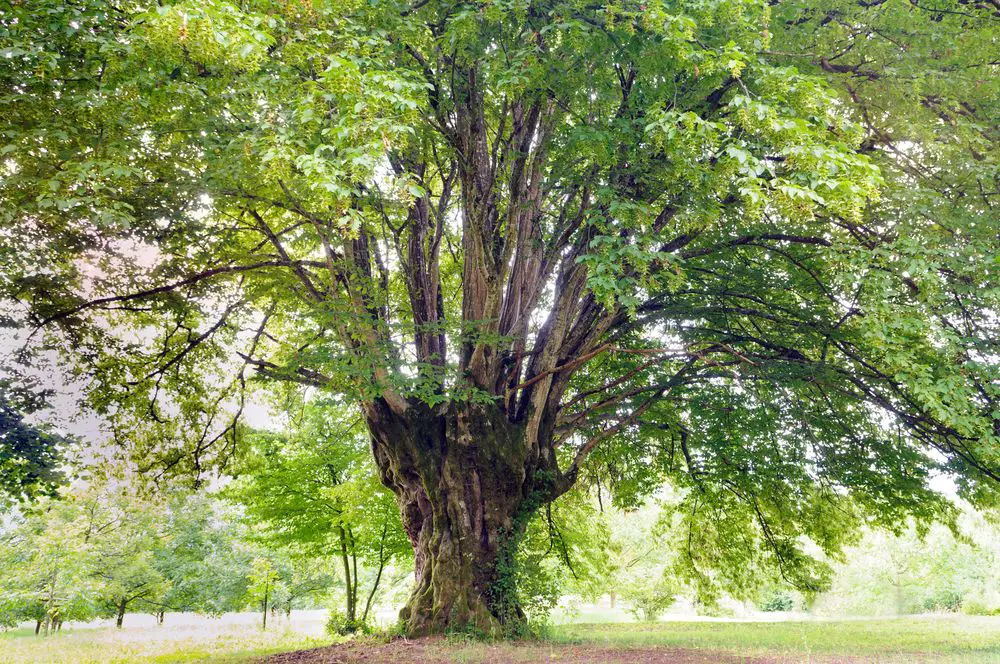
The Wild Fig Tree
One of the most incredible deep roots finds to date belongs to the wild fig tree discovered in South Africa.
This tree, found in the Echo Caves near Ohrigstad was found to have roots that went to a depth of 400 feet!
The greatest reported depth to which a tree’s roots have penetrated is 400 feet by a Wild Fig tree at Echo Caves, near Ohrigstad, South Africa.
Shepherd’s Tree
The Shepherd’s Tree is one of the trees with the deepest documented roots. It was recorded the tree had roots down a depth of 230 feet. The Shepherd’s Tree is native to the Kalahari desert.
Likewise, Which Tree Has The Strongest Roots?
White Oaks Tree (Quercus alba), Hickories (Carya sect. Carya), Walnuts Trees (Juglans microcarpanigra) and Hornbeam Cultivars have strong, deep taproots.
Also, are tree roots as long as the tree is tall?
Most tree roots occupy an area two to four times the diameter of the crown.
In dry, compacted soils with no organic matter, roots are fewer but larger and able to grow further distances from the plant. Open-grown trees often have a wider root system than trees closely planted together.
Similarly, you may ask, what plants have the deepest roots?
“Charles Darwin once wrote, in effect, that the tips of plant roots are like the brains of plants.
How deep do tree roots go? 20 feet – 200 feet? It all depends on the earth on which the tree is planted.
Trees must first develop a strong root system before they can begin to make their foliage into a beautiful spread of leaves
11 Trees With The Deepest Roots In The World
Several trees have been identified as having been confirmed to generally have significantly deeper roots than others. Examples include:
So, how deep do these go? This is an important question we’ll be finding out shortly. To do this, we’ll be looking at each of these trees with the average depth of their root systems.
1. Black Gum Tree
Black gums are among the trees with the deepest root systems. These trees are native to North America and are average-sized. Nevertheless, size isn’t a hindrance to these trees being among the deepest root systems.
As such, they tend to thrive in areas where other trees (especially those with shallow roots) won’t.
2. Sweet Gum Tree
The Sweet Gum is another tree among our list of those with the deepest roots.
These trees are known to have a minimum root depth of about 36 inches or 91 cm. Being the minimal depth measured, the roots of the sweet gum tree can go much deeper than this.
Factors that could impact root depth include soil compaction and genetics, among several others.
3. Butternut Tree
Butternut trees are also considered among trees with a deep root system.
These trees also go by the names White Walnut or Juglans Cinerea. They’re native to South East Canada and the United States. The Butternut Trees are also on this mix of the hardiest and can grow to a height of around 30 meters.
4. Japanese Pagoda Tree
The roots of the Japanese Pagoda tree penetrate deep into the soil. This enables the tree to thrive in harsh conditions.
The Japanese Pagoda tree grows to about 12 to 23 meters in length. It bears alternate compound leaves, each carrying about 7 to 17 leaflets.
5. Hickories Tree
These trees are among those with the deepest of root systems. Hickory trees come in multiple varieties and thrives in adverse conditions because of the depths reached.
However, the achievement to reach down so deeply only happens when specific situations exist.
6. Hornbeam Tree
Growing deeply down into the soil are the root systems of the Hornbeam tree.
These reach depths of about 6 feet in particular types of soil.
Hence, impacted by soil conditions is root penetration. Root penetration is impacted by soil conditions such as compaction of layers of rock underneath.
Unfortunately, when these conditions are in existence, the Hornbeam Tree roots fail to succeed in their quest to find water and nutrients, and achieve nothing.
7. White Oak
The big White Oak Trees are considered to be drought resistant in that they have very deep root systems that infiltrate the earth to between 4.5 meters or 15 feet down into the soil.
In other words, compared to the trees with shallow roots, White Oaks are considered drought resistant.
8. Walnut Tree
Among those with the deepest roots, Walnut trees roots grow to depths of about 11 feet or more. Thus, enabling the tree to flourish in harsh weather conditions.
Further, Walnut trees usually grow fast and grow very wide canopies. Lastly, the Walnut Trees can reach heights of 30 meters.
9. Banyan Tree.
This tree has the widest of spreads. Banyan ( Ficus benghalensis) is known fondly as the Strangler Tree because if its seeds land on another tree, the Banyan will put down its roots over the top of the other tree and stifle it to death.
So – it’s an Indian fig tree – in fact, it’s the national tree of India
Some trees don’t have taproots, and those that do can be as deep as 20 feet and as shallow 3 feet.
Two Of The Most Exceptional and Extra-ordinary Trees Out Of These Ten Trees Are:
10. The Wild Fig
One of the most incredibly deepest roots found to date belongs to the Wild Fig Tree. discovered in South Africa.
This tree, found in the Echo Caves near Ohrigstad, was found to have roots that went to a depth of 400 feet!
This tree, found in the Echo Caves near Ohrigstad in the Transvaal, was discovered to have roots that went down to a depth of 400 feet or 121.92 meters!
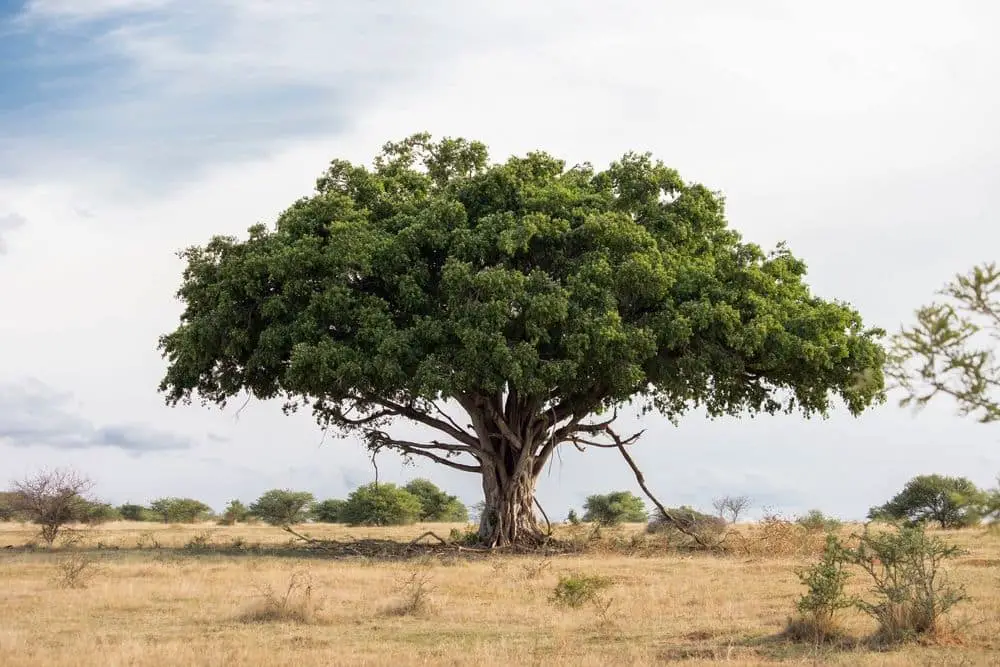
11. Shepherd’s Tree
The Shepherd’s Tree is among trees with the deepest documented roots. This knowledge was brought to life by groundwater drillers.
It was discovered that the tree had roots that went as deep as 230 feet or 70 meters! The Shepherd’s Tree is native to the Kalahari desert, in South Africa.
There Is A Variety Of Tree Roots. They are:
Permanent Roots – or Taproots
Taproots Grow Straight Down. Some reach astonishing depth. In fact, the deepest taprooted tree ever recorded is a Wild Fig Tree located in South Africa at the Echo Caves, near Ohrigstad, Mpumalanga. The taproot on this tree was close to 400 feet deep! This is exceptional.
The Deepest Taproots Will Be Found On The Following Trees:
- Black gum
- Butternut
- Hornbeam
- Hickories
- Japanese Pagoda
- Pines
- Sweet gum
- Sassafras
- Walnut tree
- White oak
Secondary Roots or Fine Roots
This means a vast formation of thousands of fine, thin little hairs that die off as the tree develops and are replaced with other stronger ones. Eventually the roots reach into the ground and become the size of trunks.
It has many separate trunks supporting the main trunks and looks like a huge, gnarled base of a tree. This is one of the largest trees in the world as far a root spreads are concerned.
Lateral Roots
These are roots like ropes they grow away from the tree, networking to better support it. The most common and Lateral roots are un-tapered, rope-like roots that grow outward and form a network to support the tree.
These are the roots most common and plentiful roots and they are also the ones that cause damage by cracking up thee paving and generally causing harm to its surrounds.
Sinker Roots
A much smaller root is s Sinker Root. They grow down Sinker roots are much smaller roots which grow straight down from the lateral root system to find nutrients.
Some species of trees, like weeping willows, eastern cottonwood, and golden bamboo, have very aggressive lateral root systems. They produce a high volume of these roots.
Oblique Roots (Heart Roots)
Heart roots grow from the base of the trunk and may be visible there. They are primary roots that grow multiple secondary roots in search of water.
They also grow down. Red oaks and sycamore trees have thick secondary roots.
The first root to grow of the primary roots is called the taproot, and it emerges as a radicle from a germinated seed.
The taproot continues to grow as the tree matures. Not all trees grow deep taproots, especially if adequate nutrients are to be found close to the surface.
Some trees have evolved the ability to grow very deep and robust taproots to find a deeper water table and withstand drought conditions.
This is not an exhaustive list; however, here are some of the most popular trees that grow the deepest taproots
Trees will show very little visible growth in their first years of life as their taproots are growing down. However, this isn’t all they are doing.
Trees must spend their energy developing a diverse root system. In some trees, the taproot will only end up being about 3 feet deep, while the other roots, which grow out of the taproot, grow much further out and down.
Where the ground is full of clay or the water table is high, even oak trees will grow shallower roots and more of them.
Pros & Cons of Planting Trees in Your Yard
Now that you know how tree roots work and where they are likely to spread let’s go over some pros and cons of planting trees in your yard.
As you look at these lists above, note the trees with the strongest and deepest root systems. They are also some of the most towering trees and may not be suitable for every yard.
If you don’t have space for your tree’s roots to grow adequately, you will always be fighting the root system and potentially damaging the tree. That is a big con.
You need at least 20 feet of clearance for trees that will grow larger than 70 feet, and 15 feet for trees up to 70 feet. Trees that grow up to 30 feet will need 8-10 feet of clearance away from your house.
Trees may also be attracted to leaking pipes buried under your yard. Sometimes an old pipe system and a big, old tree create a lethal combination.
No matter what type of tree you have, they will grow down, laterally, and horizontally so you have to be aware of this before planting.
Trees can also be a host for pests you don’t want near your house, like termites and rodents. Some pests can use tree limbs to get access to open vents and windows in your home.
The good thing about trees is that the good outweighs the bad. Of course, trees offer privacy, beauty and a home for birds and squirrels we love to watch from our windows.
When deciding on planting trees in your yard, it is important to consider tree roots and give them enough space to grow.
It is also critical that you provide your trees with nutrients to thrive in your yard.
Install a deep root system to ensure that your trees receive the oxygen, nutrients, and water deep in the root system.
Young Trees Can Have Deep Roots
It’s common to find young trees having deeper root systems than some older ones.
However, this isn’t always the case, depending on the tree type.
The trees listed above are known to grow deeper roots when young. This continues throughout the life of the tree.
Soil Layering will Impede Root Penetration
Soil layering is an important factor that affects the development or penetration of tree roots.
In other words, further downward growth of tree roots is likely to be impeded when they encounter a new layer. There are basically three layers; the topsoil, subsoil, and the C horizon.
Factors That Affect Tree Root Depth
Root development requires specific conditions to be met.
In the absence of these conditions, limited growth is achieved. However, when these conditions are present, roots grow much deeper. So, what are these conditions exactly?
There are several of them. They consist mainly of growth-friendly conditions such as the following.
What Type of Tree Roots Grow Straight Down?
A tree with a deep, root system can survive strong winds without falling to the earth. Its roots also aid soil erosion prevention, especially in flood-prone riparian areas. A tree’s roots continue to grow throughout its existence. This tree has a tap root.
Taproots grow down as deep as between 200 ft to 400 ft reaching as deep and far as they can to search for water and nutrients to keep their tree alive and help it blossom and thrive. They constantly spread out and down in search of feeding the tree.
Taproots
The roots of trees have a variety of functions. Crop roots help strengthen the soil to avoid erosion, anchoring the tree, and drawing nutrients and water from the earth.
Most of us usually think of the more extensive “woody” roots that provide support and store water and carbohydrates. But as anyone who has dug a hole near an existing tree will testify.
Secondary roots known as “feeder” roots make up the majority of a tree’s root structure. These feeder roots, which are usually less than a sixteenth of an inch deep, absorb surface water and minerals.
Taproots are the kind of tree roots that grow straight down. Taproots are long roots that emerge directly under the tree’s trunk. Trees find it challenging to develop such a root system in compacted soil.
Most trees would never grow a taproot, instead opting for a sprawling network of woody and feeder roots that are just 12 to 24 inches long.
These root systems do an excellent job of providing what plants need. But it is easy to overlook the fact that they massively expand the size of planted trees.
It regularly stretches up to four times beyond the canopy. This subterranean sprawl is the accurate measure of tree size in smaller yards or plots where other trees can compete for resources.
Permanent Roots
The taproot is the first of the primary roots to mature and grows as a radical from a germinated seed. If the tree matures, the taproot begins to grow.
Not all trees develop deep taproots, mainly if sufficient nutrients are available near the surface.
In finding an available water source to survive drought conditions, some trees have developed the ability to create very deep and sturdy taproots.
In Echo Caves, Transvaal, South Africa, a wild fig tree had the deepest taproot ever discovered. It was nearly 400 feet long and almost 400 feet wide.
When their taproots grow back, trees will show very little apparent growth in their first years of existence. However, this is not the only thing they are doing.
Trees have to use a lot of resources to build a complex root structure. The taproot of some trees will only grow to be about 3 feet tall, while the other roots that grow out of it will grow even farther out and down.
The Names Of These Roots Are:
1. Oblique Roots (Heart Roots)
Heart roots can be seen growing from the base of the trunk. They are primary roots that produce a large number of secondary roots in their quest for water. They even shrink in size. Primary roots are dense in red oaks and sycamores.
2. Lateral Roots
Lateral roots are a network of un-tapered, rope-like roots that extend outward to support the tree. In several plants, these are the most widespread.
Furthermore, they are abundant in the roots that are most likely to destroy lawnmowers and tear up the sidewalk.
3. Sinker Roots
Sinker roots are much smaller roots that emerge down from the lateral root system in search of nutrients.
Examples are trees with destructive lateral root systems, such as weeping willows, eastern cottonwood, and golden bamboo. They grow a large number of these roots.
4. Fine Roots – Secondary Roots
Finally, there are tens of thousands of tiny roots. As the tree matures, this extensive network of roots with fewer than 2 millimetres diameter expands and dies in waves.
They aim to cover as much surface area as possible to maximize nutrient absorption. Most of them will finally die out and be replaced. Any of them, though, will grow into lateral roots.
The taproot and core roots of a tree emerge in the top three feet of soil and extend far broader than the drip line (the imaginary line indicating that water drips from the tree’s leaves).
On the other hand, drought and soil conditions affect the growth pattern. Trees can develop deep taproots whether the soil is sandy or the water table is inadequate.
Even oak trees can develop shallow roots and more of them when the earth is full of clay or the water table is high.
Trees Which Roots Grow Straight Down – Here are a few of the most well-known trees with the deepest taproots:
1. Oak Tree (white)
White oaks have a tap root that grows under the trunk in well-draining soil, but most tree rooted in clay or compacted soil do not have one. White oak prefers an acidic, damp, well-drained soil and grows in the sun or partial shade.
2. Tree of the Walnut
The root system of a mature walnut tree consists of a taproot from childhood, downward-angled roots, and lateral roots at the soil level.
The depth of a tree’s roots is determined by the soil and moisture regime it has undergone over its life.
Moister soils allow less taproot and more horizontal, surface-dwelling roots, while dryer conditions encourage thicker roots with downward angles.
Like those of all trees, the roots of a walnut tree stretch outward two to four times the diameter of the canopy.
The bulk of tree roots can be no more than 3 to 7 feet deep in the dirt.
The most feeder and horizontal roots can be found in the top 6 to 24 inches, taking advantage of rotting organic compounds, heat, and rain moisture.
3. Black Gum Tree
The black gum is found from east Texas to the east coast, central Michigan, and Maine. It can flourish in wet areas such as along streams and the uplands, but it prefers light-textured, well-drained soils.
It tolerates shade well and seems to grow better with oaks than with maples.
The Black gum’s peculiar root structure, which resembles many taproots, is likely why the tree thrives in deep, damp soils.
Black gum can reach a height of 50 to 75 feet in most cases, but it can reach almost 150 feet in extreme cases. It’s usually not more than 25 feet across.
4. Japanese Pagoda
The Chinese scholar tree is another name for the Japanese pagoda tree. For decades, the Japanese pagoda tree has been widely planted near temples and shrines in eastern Asia.
Since the roots are fibrous and thick, they are unlikely to damage the surrounding hardscape.
The Japanese pagoda tree is unaffected by pests and diseases and does not require particular soil or water.
Like many other plants, it thrives in full sun and damp, well-drained soils, but it can withstand heat, drought, compacted soils, and pollution once grown.
5. Pines
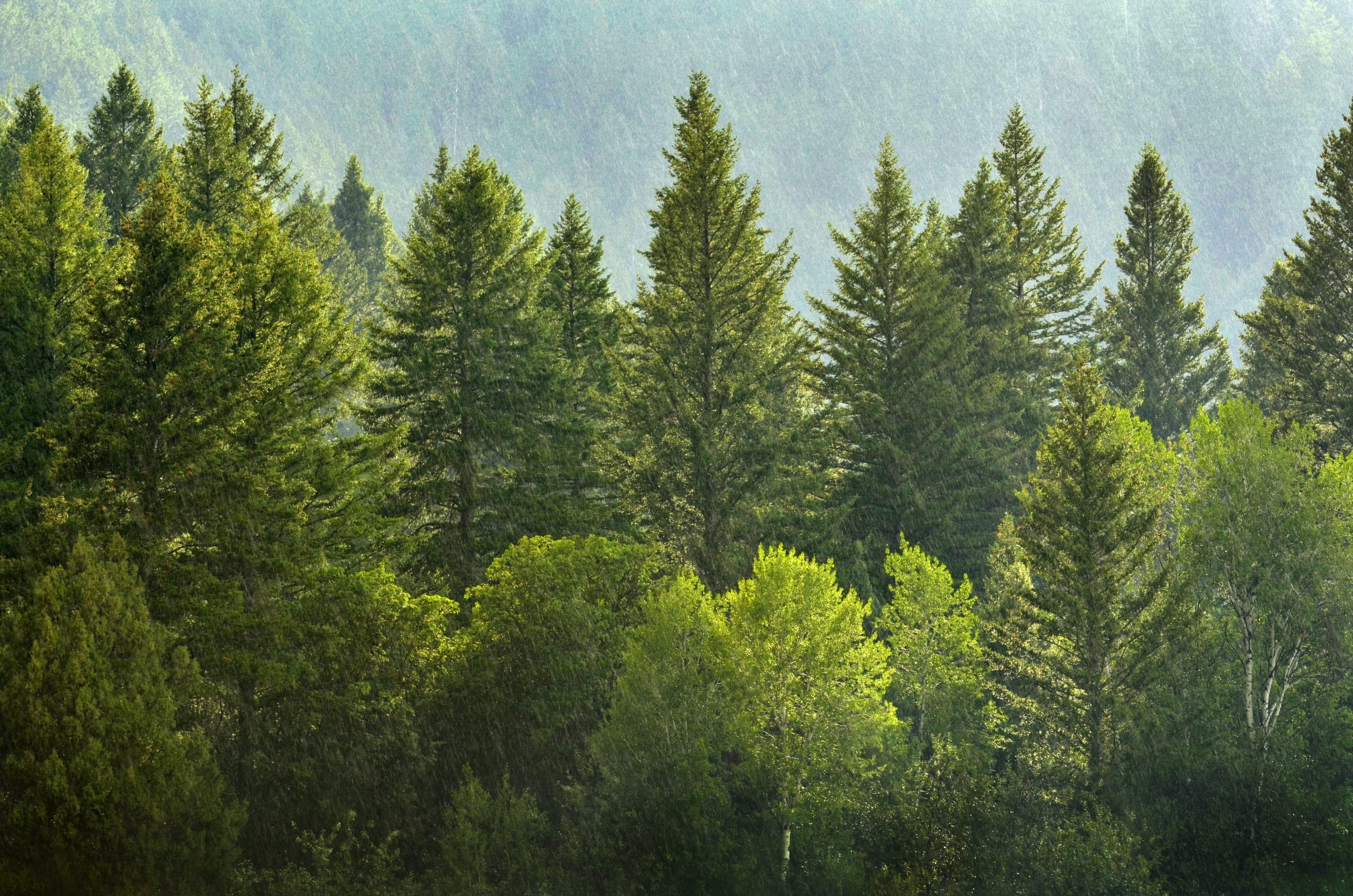
Pine trees are coniferous trees that grow in the Polar Regions.
Pine trees are readily distinguished from other trees by their needle-like leaves and cone-shaped crown. Humans profit economically from pines because of their timber trade.
The roots of pine trees are close to those of most other trees. Pines have a Taproot system that grows from their roots.
Like all other Taproots, the seedling of Pine develops into the main root. Then gives rise to a variety of lateral roots, also known as secondary roots.
6. Hornbeam Tree
The hornbeam is a wood that can be used in a variety of ways. It yields some of the toughest wood used in European gardens and woodlots, and the roots go deep into the dirt rather than crawling around the pavement.
It causes sidewalks and paving to heave and break.
Lastly, these trees do not have any unpleasant odors. No slushy gum, fluff, large seed pods, flaking bark, and so on. When the leaves do fall to the ground, they are small enough to make a cool, even mulch.
The Benefits and Drawbacks of Planting Trees in Your Yard
Let us look at some of the benefits and drawbacks of planting trees in your yard so that you know how tree root’s function and where they’re going to spread.
The Benefits of Taproot Trees
Drought tolerance is high in trees with taproots. And in dry climates or environments, many trees may send roots down more than 75 feet, allowing them to reach the water.
Taproots may also be used to store food, allowing them to become ever more self-sufficient and robust.
When reading the lists above, take care of the trees with the highest and deepest root systems. They are still some of the tallest trees, so they might not be appropriate for any yard.
If you do not give the tree enough room to grow roots, you will still be battling the root system and risk killing the tree. That is a significant disadvantage.
For trees larger than 70 feet, you will need at least 20 feet of clearance, and for trees smaller than 70 feet, you’ll need 15 feet. Trees that grow to be 30 feet tall would need 8-10 feet of clearance from your home.
Leaking pipes hidden under your lawn can also attract trees. An old pipe system and a big, old tree may often be a deadly combination.
You must be mindful that it will grow down, laterally, and horizontally no matter what kind of tree you have, so keep that in mind before planting.
Trees can also be a haven for pests like termites and rats that you don’t want near your home. Rats may use tree branches to access your home’s exposed vents and walls.
The benefit of trees is that the benefits outnumber the drawbacks. Trees have anonymity, charm, and a sanctuary for the birds and squirrels that we enjoy watching from our windows.
They reduce our energy costs by shielding our homes from the elements. They also shift with the seasons, providing fresh beauty all the time.
Finally, if trees are planted in the right place, they are relatively low maintenance.
Drawbacks of Taproots
Since the taproot penetrates so deeply into the dirt, digging and lifting a tap-rooted plant can be difficult. Consider the dandelions in your yard.
Another problem is dividing tap-rooted plants. Since you need a bit of the taproot for each division, you can’t just cut off the crown pieces with roots attached like you can for daylilies or coreopsis.
Consider the dandelion once more, and you will see why it’s not unlikely.
Near the crown, taproots sometimes produce offshoots. Necks are the name for this kind of structure.
If your plant has some of these, you should cut off each neck that has several smaller roots attached to it and replant it successfully.
This is a popular way to split butterfly bush (Buddleia davidii).
If no offshoots have emerged, replant a small taproot piece with at least one eye and some smaller roots attached. It will send up a new shoot, just like your beheaded dandelion.
Taproot plant seedlings are also easier to transplant while they are young. Plants like butterfly weed (Asclepias tuberosa) produce a lot of seedlings, so you do not have to worry about disturbing the original plant.
If you wait too long, the added hassle will make moving them more difficult.
When deciding whether or not to plant trees in your yard, it is crucial to think of trees.
Final Thoughts on Trees and the different Roots they Have
As a result, trees with straight-growing roots should be considered for planting.
For your trees to survive in your yard, you must also supply them with nutrients as they need to build a deep root system to ensure that they receive air, nutrients, and water deep in their root systems.
Once you deal with their needs, you will be rewarded with some beautiful sights!
Read More:
The Weeping Cherry Tree – The Ultimate Guide of What You Need to Know
What Trees Have The Least Invasive Roots?

